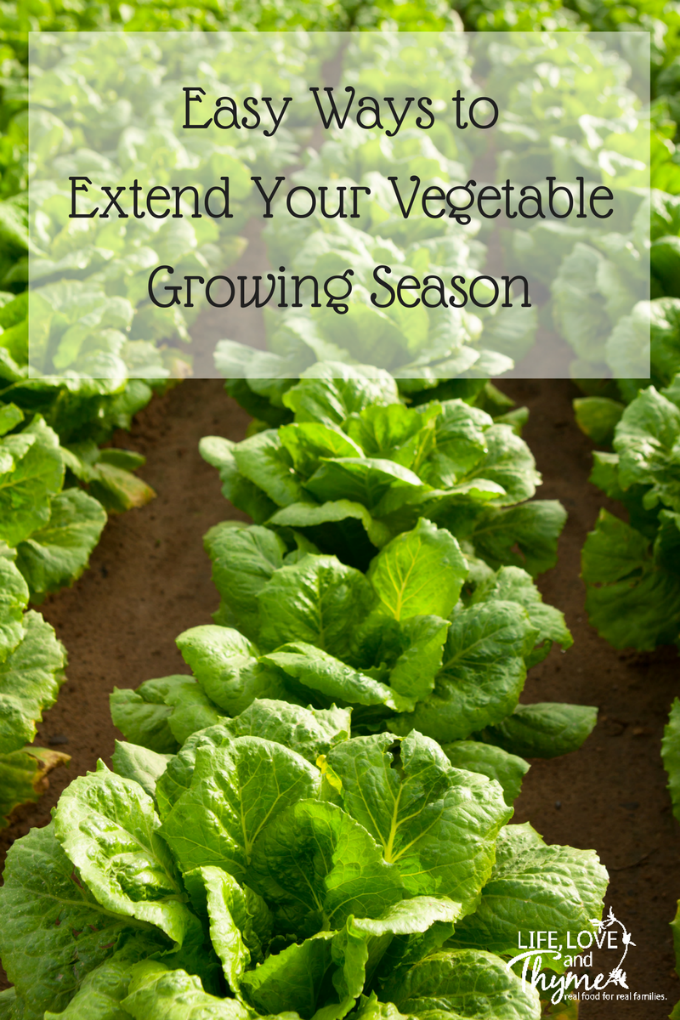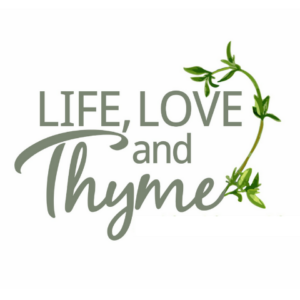What I miss most during the cold season (which admittedly isn’t that long here in Texas) is fresh veggies from the garden. But with a little planning you can extend your vegetable growing season.

Easy Ways to Extend Your Vegetable Growing Season
Mulch.
Adding a heavy layer of mulch is the easiest way to provide protection for your plants. Mulching around your plants provides a layer of insulation for the soil when temperatures dip too low. It will also help hold in moisture as temperatures rise so you won’t have to water as much.
There are many types of mulch available, including shredded leaves, wood chips, grass clippings, straw and compost. Whatever type of mulch you choose for your food growing area, check to ensure it is free of chemical pesticides and herbicides. For example, if you use a lawn service to keep your lawn green and free of weeds, you wouldn’t want to use your lawn clippings on your vegetable garden.
Cold Frames.
Cold frames are another great way to extend your vegetable-growing season. A cold frame is simply a four-sided structure with a glass or plastic lid on top. They are used to trap in heat from the sun to keep plants warm when temperatures drop.
Cold frames are relatively easy to build. Start by creating a rectangular or square structure out of wood and securing an old glass window or door on top with hinges on one side. This will keep the top from blowing off in the wind and will make it easy to open and shut as you add and remove plants. Potted plants and seedlings can then be placed inside to harden them off or help them survive unexpected dips in temperature.
In a pinch, you can create a makeshift cold frame with several bales of straw and an old glass window or door panel. Simply arrange the bales in a rectangle, while leaving the interior empty to house your plants. Top with a window or glass-paneled door and securely weigh it down on both ends so it doesn’t fly off in high winds.
You can always just buy a cold frame like this one relatively cheap.
Add a Greenhouse.
For many gardeners, a greenhouse is the ultimate gardening dream. How great would it be to have a permanent year-round space to nurture and grow your favorite plants? As an added bonus, a well-designed greenhouse can serve as a beautiful focal point for your property, as well.
Unfortunately, hiring a contractor or purchasing a high-end kit to build a permanent greenhouse can get pretty expensive. Plus, you need to pay to heat the structure part of the year in colder climates. If you rent or have limited outdoor space, a permanent greenhouse may not be a viable option.
However, you can still enjoy many of the benefits a greenhouse offers without the high price tag or long-term commitment. There are a number of very affordable and portable mini-greenhouses available that are lightweight and have a small footprint. These options take advantage of vertical space by providing four or five substantial shelves to house your plants.
With a little planning, these three methods can extend your vegetable growing season. Once you get started, you may be surprised by how much more productive your gardening efforts become!
Do you have any other tips to extend your vegetable growing season?





